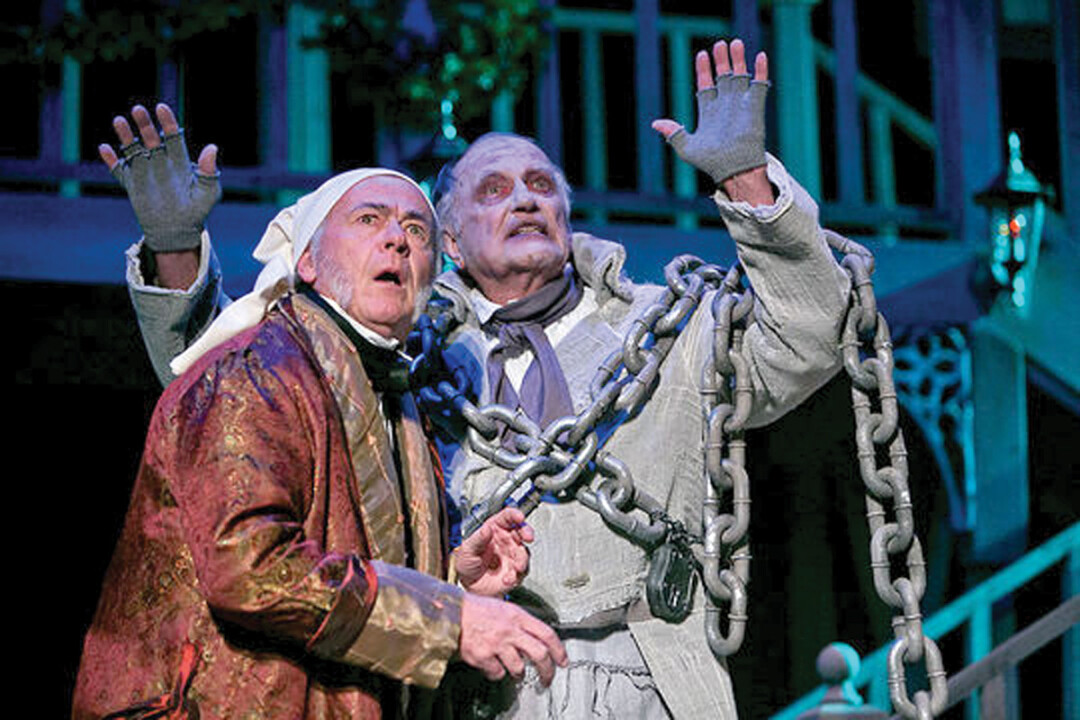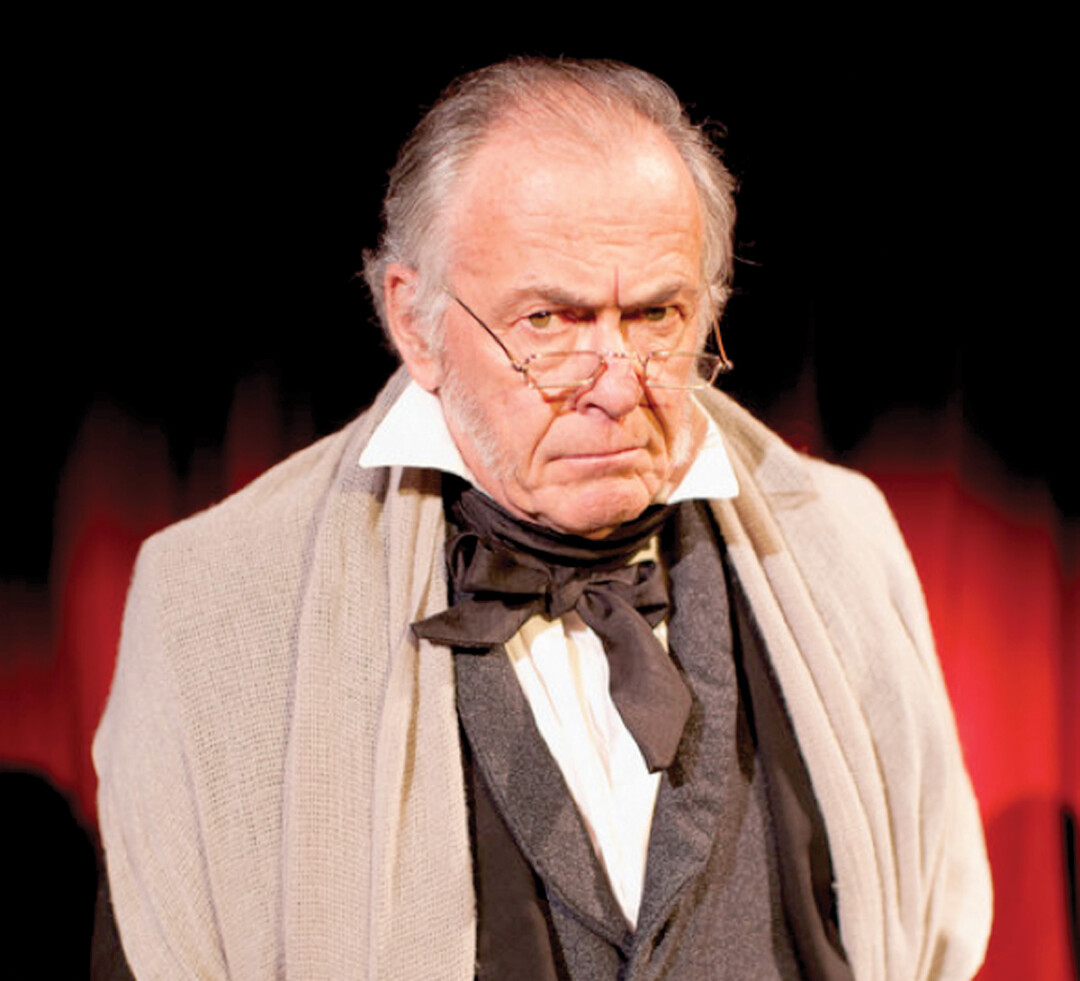Bah Humbug! A Christmas Carol 2019
Kevin Brustuen | Sunday Dec. 1st, 2019

A Christmas Carol, the famous story by Charles Dickens, comes to The Ellen Theatre December 6 through December 22. Dickens first conceived of this story as a pamphlet meant to speak out against the conditions that led to poor children being forced into labor, which he planned on calling “An Appeal to the People of England on behalf of the Poor Man’s Child,” but quickly turned it into the famous story known and loved by millions the world over. Originally published in London on December 19, 1843, the first edition sold out entirely by Christmas Eve, only five days later, foreshadowing the popularity that has followed this story over the succeeding 176 years. In 1849, Dickens began public readings of his story, and due to public demand continued these readings for another 127 performances until 1870 when Dickens died. The first stage production of A Christmas Carol opened on February 5, 1844, in London. Stage and film productions of this show have continued virtually non-stop from then through today.
Dickens’ writing was strongly influenced by his experiences as an 11-year-old. Dickens’ father was committed to a debtor’s prison, forcing the young Charles to drop out of school and work in abysmal conditions in a factory, experiencing the life of countless other children of his era: 16-hour days working in mines, factories, and shops, often going home to nothing. Because of his own personal experience as a child having to work in a factory, he felt compelled to work towards improving the situation. At the time, there was a widespread belief that poor people tended to be so because they were lazy and immoral and helping them would only encourage their malingering. If they were to be helped, it should be under conditions so awful as to discourage others from seeking that help. At the same time, Victorian England was beginning to celebrate Christmas with friends and family in lavish gatherings, filled with sumptuous meals and expensive gift exchanges. Dickens couldn’t help but feel the contradiction, and felt he needed to speak out against a system of unregulated capitalism which made many men rich while essentially enslaving the poor.
This is the fourth time in ten years that The Ellen Theatre has offered A Christmas Carol in its annual holiday offerings. This year, director Mark Kuntz chose to use a different adaptation of the play from previous years, selecting an adaptation written by Jerry Patch from the South Coast Repertory Theatre in Costa Mesa, California, where it has been performed for 40 years. Patch’s adaptation of A Christmas Carol is slightly shorter and faster-paced, and Kuntz hopes this will cause audiences to better empathize with Scrooge and dwell on their own ‘scrooge-ness’. Kuntz feels this adaptation does a great job of balancing the light and funny with the dark and gloomy side of the story. This version is not a musical with a full orchestra as in other productions, but is rather a driving theatrical performance that fills out the character of Scrooge, allowing us to see him for more than simply a single representative of a miserly existence, but rather as symbolic of all of humanity’s self-centeredness.
Claudia Boddy, the costume designer for this show, notes the connection between the Victorian era’s romantic view of science along with the presence of the Industrial Revolution combining to create a sense of truthfulness of place, which led to the desire to use a “Steampunk” design to costume the actors. Kuntz refers to steampunk as “Victorian futurism”, a blend of clothing from the Victorian era mixed with a science fiction genre, which gives the play a sense of a Dickensian historical grounding, while at the same time encouraging people to identify the play as at least partially in the here and now, enhancing the immediateness of self-investigation we all should do. In other words, Scrooge is not the only one in the theatre who will be confronted with his ghosts.
Kuntz cast the ghosts of Christmas Past, Christmas Present, and Christmas Future as women in this play in order to emphasize that Scrooge failed with relationships, especially with women, in his life, as witnessed during the scenes with the ghost of Christmas Past in the play. Torie Laher plays the ghost of Christmas Present and points out that women bring a nurturing quality to their role as the ghosts, despite the severity of the scenes. During the Christmas Present ghost scenes, Laher comes out dressed in peppermint candy stockings and a red party dress, a very youthful and jovial party-girl, full of good humor. However, just under the cheerful façade lies a very angry, severe young woman. Despite this anger though, Laher points out that this severity is grounded in nurturing, like a mother giving “tough love,” as she shows Scrooge the pain of all humanity. She insists that it’s not just Scrooge who has to confront the demons of his current existence, but all of humanity, us included, who must consider who we are and the choices we make in life.

Joel Jahnke is cast as Scrooge, a role he has cherished in the previous three performances of A Christmas Carol on the Ellen stage. Jahnke loves this play because, as he says, “It’s an ageless story of redemption and rebirth that is the quintessential Christmas message. It reminds us that we are all humans on a shared journey and that it is never too late to change.” The name “Scrooge” was apparently invented by Dickens for this story, and within several years the name came to be synonymous for someone who is selfish and miserly. In previous adaptations of A Christmas Carol, Scrooge and all the baggage that came with that name stood for one person— Scrooge. Now, having a new adaptation of the play, and directed by Kuntz (Mark’s first time directing A Christmas Carol), Jahnke feels the role of Scrooge will be a bit different, a bit more enhanced in such a way that it may make Scrooge more accessible to the audience. Collaboratively, that is exactly what Kuntz, the actors, and the design team are striving for with this production: to make Scrooge into a deeper character, filling out the character more completely, thus making him easier for the audience to empathize with, making the play more personal for each of us, while remaining faithful to its Christmas message of redemption and rebirth.
For Dickens himself, as well as the London audiences of 1843, A Christmas Carol became a catharsis as well as an exercise in self-examination often accompanied by vows of personal change. In our world today, where the gap between poverty and wealth seems to be increasing daily, this production can help audiences once more experience something akin to what Dickens and the London audiences of his time experienced.
A Christmas Carol opens on Friday December 6 at 7:30 and runs through Sunday December 22 with a Sunday matinee.
For more information and to purchase tickets, please visit The Ellen’s website at www.theellentheatre.com or call (406) 585-5885.
Listen to the writer of this article read it on air thanks to KGVM Radio.
| Tweet |
